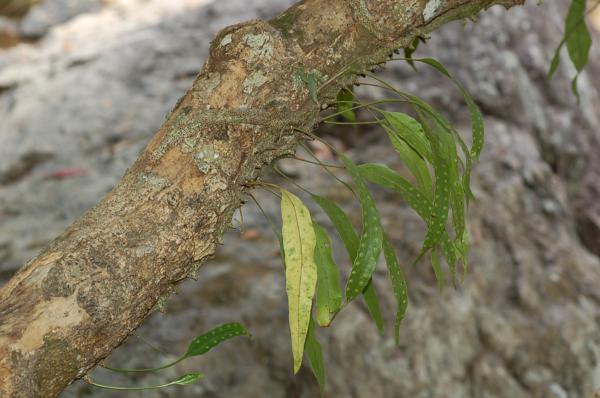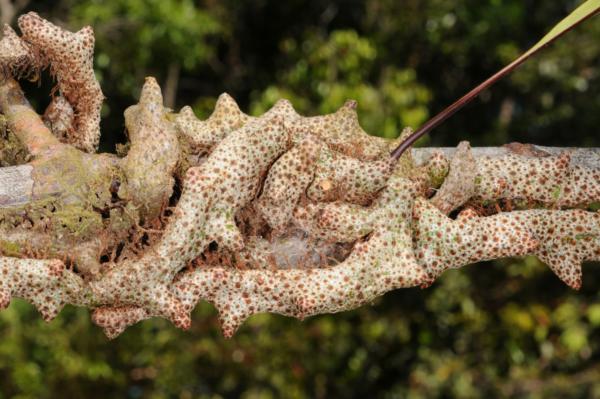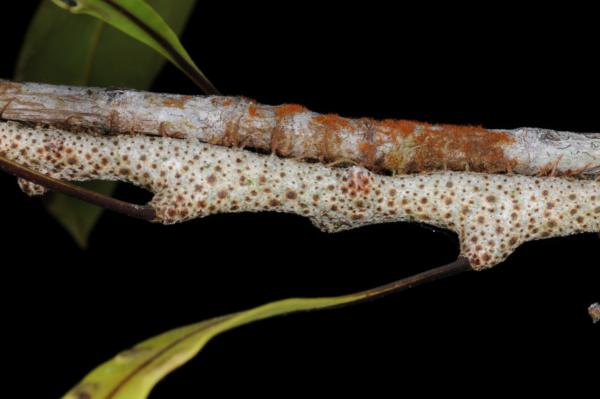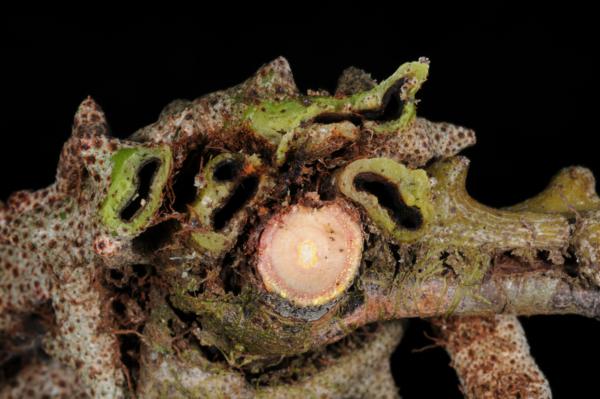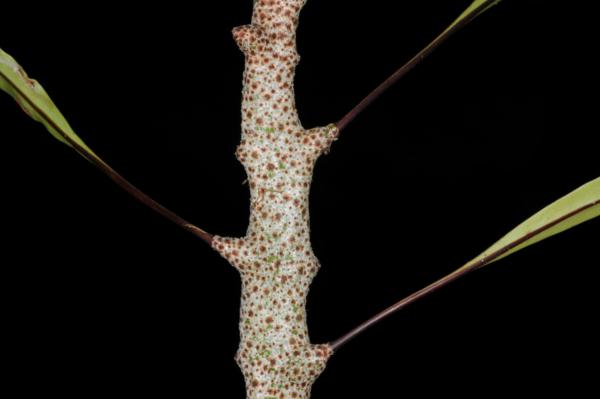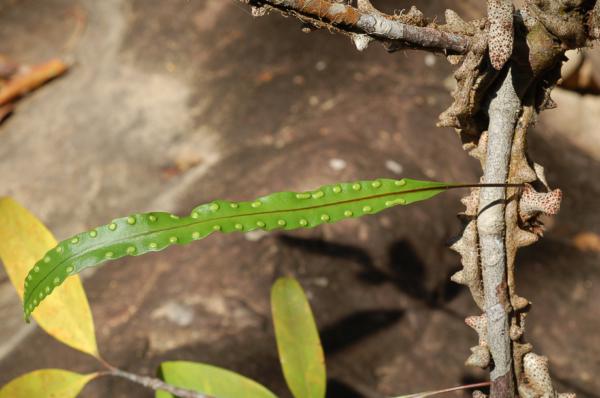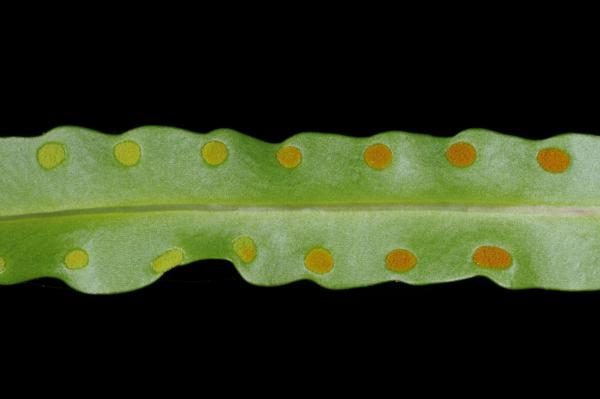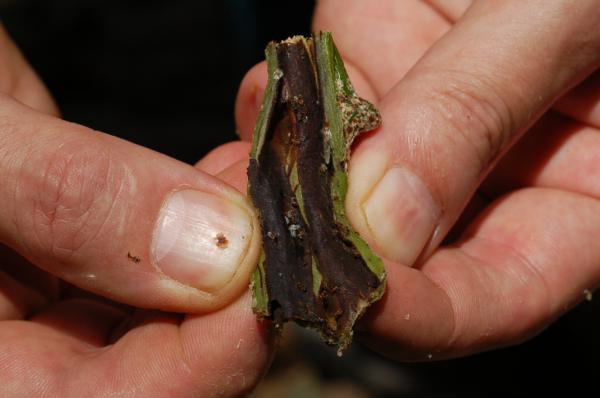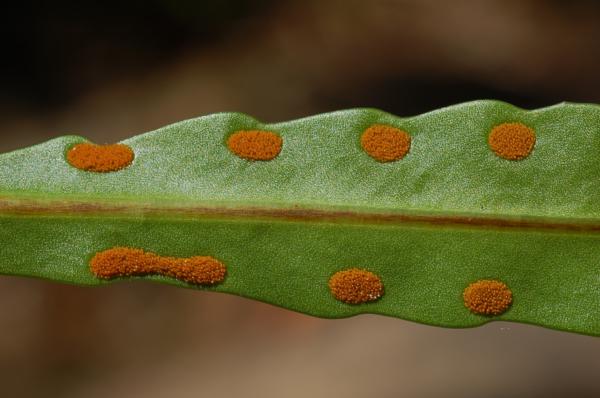
Lecanopteris sinuosa (Wall. ex Hook.) Copel.
Family
Polypodiaceae
Nomenclature
Lecanopteris sinuosa (Wall. ex Hook.) Copel., Univ. Calif. Publ. Bot. 16: 123. 1929; Hennipman & Hovenkamp, Fl. Males., Ser. II, Ferns and Fern Allies 3: 64. 1998; Boonkerd & Pollawatn, Pterid. Thailand: 272. 2000; Leti et al., Fl. Photogr. Cambodge 558. 2013. – Polypodium sinuosum Wall. ex Hook., Sp. Fil. 5: 61, t. 284. 1863; Christ, Bot. Tidsskr. 24: 105. 1901; C.Chr., Bot. Tidsskr. 32: 348. 1916. – Phymatodes sinuosa (Wall. ex Hook.) J.Sm., Ferns Brit. For. ed. 2: 296. 1877; Tardieu & C.Chr., Fl. Indo-Chine 7(2): 470. 1941; Holttum, Rev. Fl. Malaya ed. 1, 2: 190. 1955 [‘1954’]; Holttum, Dansk Bot. Ark. 20: 21. 1961; Seidenf., Nat. Hist. Bull. Siam Soc. 19: 86. 1958. – Pleopeltis sinuosa (Wall. ex Hook.) Bedd., Ferns Brit. India: t. 8. 1865; Bedd., Handb. Ferns Brit. India: 349, f. 195. 1883. – Myrmecophila sinuosa (Wall. ex Hook.) Nakai ex H.Ito, J. Jap. Bot. 11: 98. 1935; Ching, Sunyatsenia 5: 259. 1940; Tagawa & K.Iwats., SouthE. Asian Stud. 3(3): 78. 1965; Tagawa & K.Iwats., SouthE. Asian Stud. 5: 54. 1967; Tagawa & K.Iwats., Fl. Thailand 3: 535. 1989. – Type: Wallich 2231 (K), Malacca.
Description
Rhizome creeping, thick, 1–1.5(–2) cm diam., hollow and ant-inhabited, bearing two rows of fronds usually about 1.5 cm apart on tall phyllopodia of more than 5 mm in height, densely scaly; scales circular, about 3 mm diam., attached at central point, central portion about 1 mm diam., dark brown, clathrate with thick internal walls, the margin white consisting of narrow cells. Stipes 3–8 cm long, winged on uppermost portion. Laminae simple, oblong to linear, round to moderately acute at apex, cuneate to broadly attenuate at base, 15–38 by 3.5 cm in sterile and 0.7– 1.5 cm broad in fertile ones, subentire or slightly wavy at margin; midrib raised on both surfaces, veins visible, copiously anastomosing; papyraceous. Sori medial or submarginal, in one row at each side of midrib, round to oblong , about 3.5 mm broad at maturity, in a distinct hollow which raised is on upper surface.
Distribution in Thailand
EASTERN: Nakhon Ratchasima; SOUTH-WESTERN: Phetchaburi; SOUTH-EASTERN: Chanthaburi, Trat; PENINSULAR: Chumphon, Krabi, Nakhon Si Thammarat, Trang, Satun, Yala.
Distribution in Cambodia
Kampot, Koh Kong, Mondulkiri.
Wider Distribution
Sumatra and Peninsular Malaysia to New Hebrides and the Solomon Islands, north to Cambodia and Vietnam.
Ecology
On tree trunks in light shade or in open places at low altitudes.
Proposed IUCN Conservation Assessment
Least Concern (LC). This species is widespread and not under any known threat.
Voucher specimens - Thailand
Middleton et al. 4623, Trat, Ko Chang, Trail from Khlong Phlu Ranger Station (E).
Voucher specimens - Cambodia
Long et al. CL456, Mondulkiri (P); Long et al. CL501, Koh Kong (P).
Habit
Network of rhizomes around a branch
Rhizome attached to twig
Cross section through rhizomes showing hollow interior
Rhizome and stipe bases
Frond
Lower surface of frond with immature sori
Cut open rhizome with ants' eggs.
Lower surface of frond with mature sori
Site hosted by the Royal Botanic Garden Edinburgh. Content managed by Stuart Lindsay, Gardens by the Bay, Singapore and David Middleton, Singapore Botanic Gardens. Last updated 24 January 2012
